Introduction:
Sculpture is an ancient and timeless way people express themselves through art. For centuries, humans have been fascinated by the skill of shaping and molding raw materials into breathtaking 3D masterpieces. This has led to types of sculptures, each with its own unique features and purposes. In our exploration of "Types of Sculptures," we'll dive into the basics, different forms, crucial elements, well-known sculptors, and the materials that give life to these incredible creations.
What is the Definition of a Sculpture?
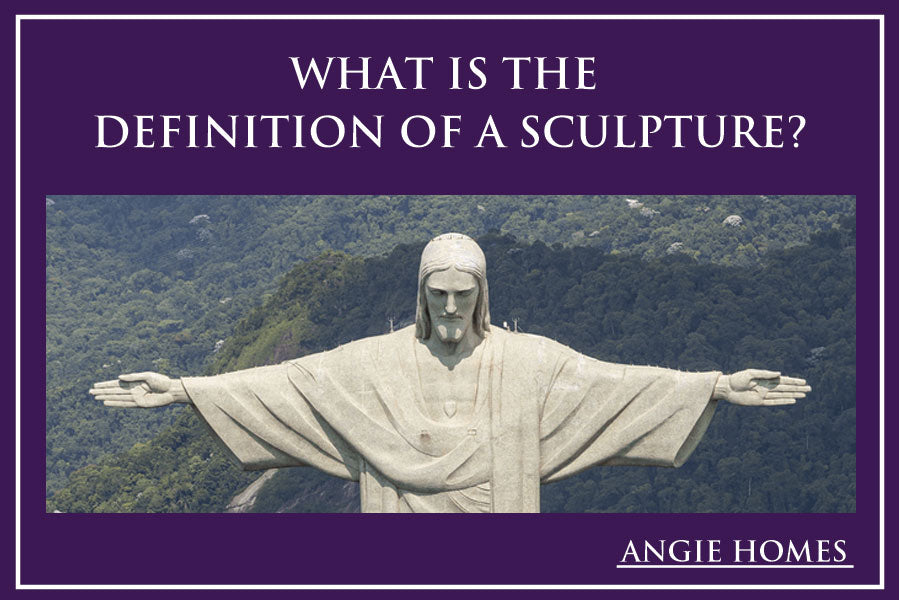
Before we start this journey, it's essential to understand what a sculpture really is. At its core, a sculpture is an artistic creation where materials are manipulated to express an idea, emotion, or concept in three dimensions. Unlike flat art forms like paintings or drawings, types of sculptures take up space and encourage viewers to look at them from different angles.
What is a Sculpture - Simple Definition:
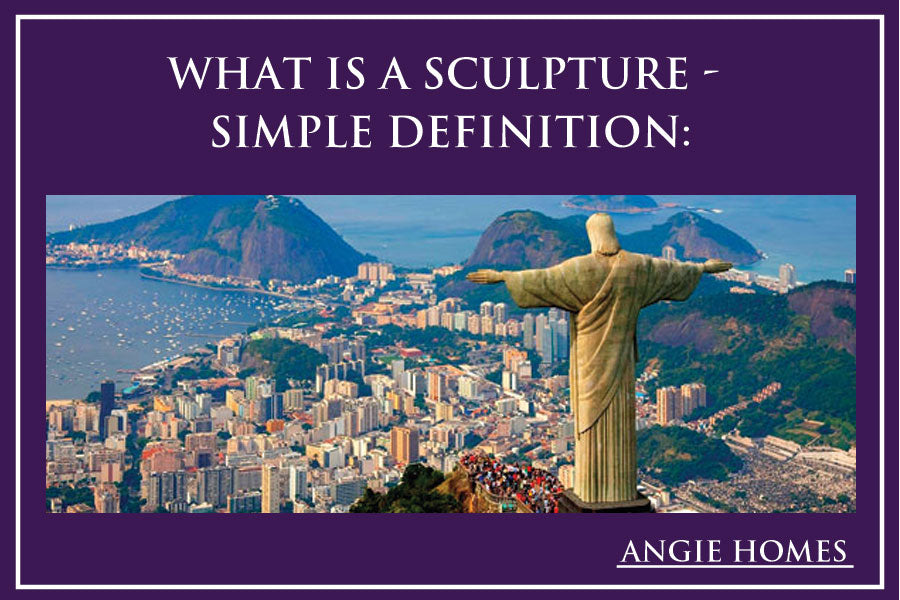
In simpler terms, a sculpture is a three-dimensional artwork made by carving, modeling, casting, or putting materials together to create a tangible and often large piece. The simplicity of this definition hides the complexity and diversity within the world of types of sculptures.
What are the 4 Basic Types of Sculpture?
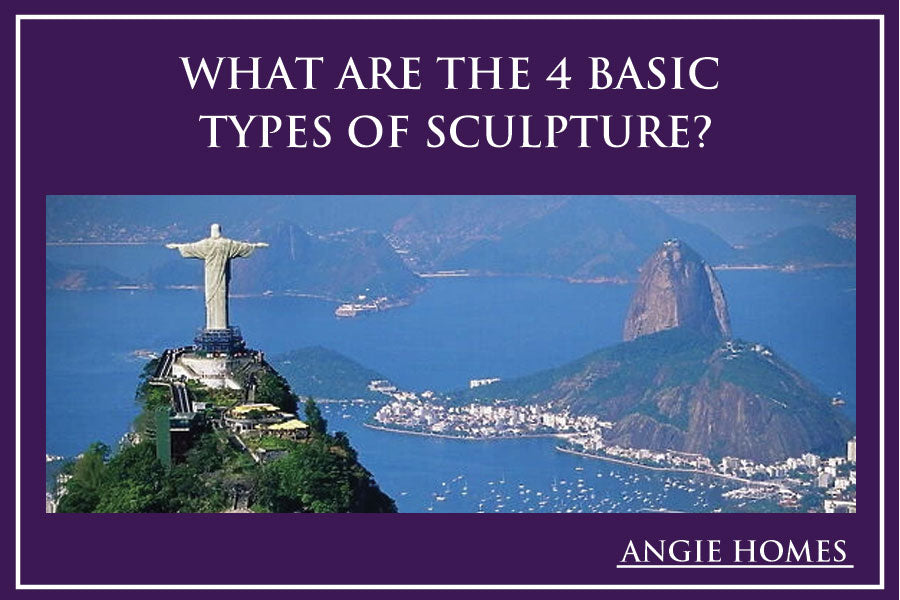
To organize the many types of sculptures, artists and art historians have identified four basic types, each with its own characteristics and techniques. These include representational sculpture, abstract sculpture, non-representational sculpture, and installation sculpture. Let's dig into these types of sculptures to understand what makes them unique.
What is a Sculpture?
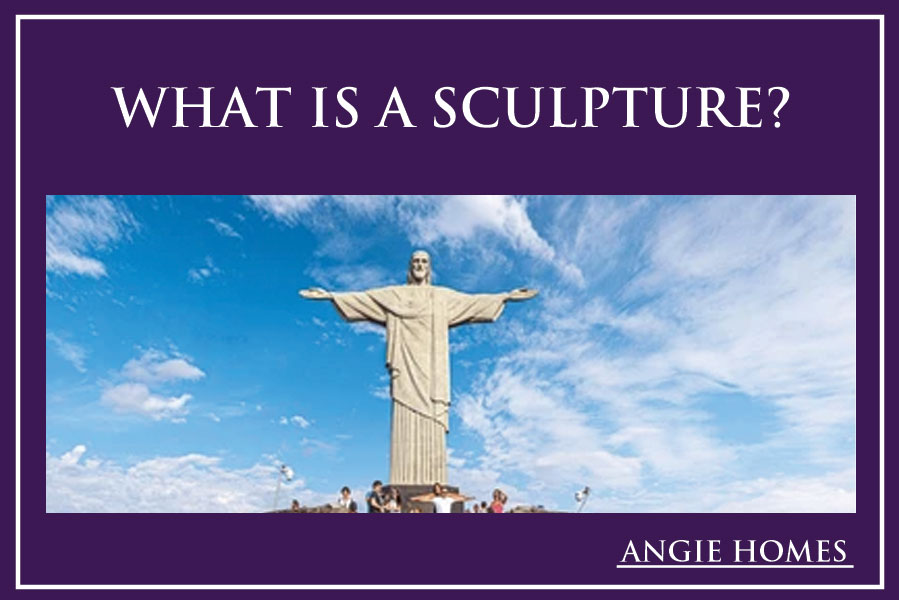
-
Representational Sculpture:
Representational sculpture, also known as figurative sculpture, aims to show recognizable objects or subjects in a lifelike way. Artists working in these types of sculptures try to capture the essence of the subject, whether it's a person, animal, or object, in a way that's easily recognizable and often realistic.
-
Abstract Sculpture:
In contrast, abstract sculpture doesn't try to be realistic. Instead, it emphasizes form, color, and texture. Artists in the abstract realm often simplify their subjects to essential elements, allowing for greater interpretation and emotional impact from the viewer.
-
Non-representational Sculpture:
Non-representational sculpture, also called non-objective or absolute sculpture, goes beyond the need for recognizable subjects. Instead, these types of sculptures focus on conveying emotions, concepts, or purely aesthetic qualities through form, texture, and spatial relationships.
-
Installation Sculpture:
Installation sculpture goes beyond individual objects, transforming entire spaces into immersive artistic experiences. These types of sculptures often combine various elements like sculptures, sound, light, and other media, creating a multisensory encounter for the audience.
-
Environmental Sculpture:
Environmental sculpture takes the immersive concept further by integrating artworks with natural surroundings. Sculptors working in this type often use landscapes or specific locations to enhance the overall impact of their creations, blurring the lines between art and the environment.
-
Kinetic Sculpture:
Kinetic sculpture adds movement as a fundamental element. Whether powered by wind, motors, or manual interaction, these types of sculptures come to life through motion, adding an extra layer of dynamism and unpredictability to the viewing experience.
-
Mixed Media Sculpture:
Mixed media sculpture combines various materials and techniques to create eclectic and multifaceted artworks. Artists in this category often push the boundaries of traditional types of sculptures by incorporating unconventional materials, expanding the expressive potential of their creations.
-
Elements of a Sculpture:
Understanding the different types of sculptures also means appreciating the essential elements that make these three-dimensional artworks special. These elements are like the building blocks that artists use to bring their visions to life.
Form:
The form, or the shape and structure of types of sculptures in three-dimensional space, is crucial. Whether a sculpture is representational or abstract, the form is a basic aspect that determines how the sculpture takes up space and interacts with its surroundings.
Space:
Space in sculpture isn't just the empty areas; it's a vital component defining the relationship between types of sculptures and their environment. Artists skillfully use positive and negative spaces to create a balanced or intentionally discordant composition.
Texture:
Texture adds a touchable dimension to sculptures, inviting viewers to visually and sometimes physically engage with the artwork. Whether smooth, rough, or textured, the surface of a sculpture can significantly impact how viewers perceive and connect with the piece.
Color:
While not always the main focus, color plays a significant role in types of sculptures, especially in mixed media or installation works. Thoughtful use of color can evoke emotions, convey meaning, or enhance the overall visual impact of the artwork.
Scale:
The scale of a sculpture refers to its size compared to the surrounding space and the viewer. Whether huge or tiny, the scale contributes to the overall presence and impact of the artwork.
Composition:
Composition involves how elements are arranged within types of sculptures to create a visually cohesive and aesthetically pleasing whole. Artists carefully consider the placement and relationships between forms, balancing the composition for maximum effect.
Balance:
Balance is a crucial element ensuring stability and harmony within a sculpture. Whether achieved through symmetry or asymmetry, balance prevents the artwork from feeling disjointed or top-heavy.
Contrast:
Contrast, whether in form, texture, or color, adds visual interest and dynamism to sculptures. By placing elements with distinct qualities next to each other, artists can guide the viewer's focus and create a sense of drama or tension.
Rhythm:
Rhythm in types of sculptures refers to the flow and movement created by repeating patterns or elements. This dynamic quality can guide the viewer's eye through the sculpture, establishing a sense of continuity and coherence.
Proportion:
Proportion is the relationship between different parts of sculptures. Skillful manipulation of proportion ensures that each element contributes harmoniously to the overall composition, preventing any part from overpowering or being overshadowed.
-
Famous Sculptors:
As we explore the vast world of sculpture, it's essential to recognize and celebrate the artists who have made a lasting impact on this rich artistic tradition. These visionaries have not only mastered the technical aspects of sculpting and different types of sculptures but have also pushed the boundaries of creativity and expression.
Michelangelo:
Known for his unmatched skill and contributions to the Italian Renaissance, Michelangelo Buonarroti is one of the most influential sculptors in history. Masterpieces like "David" and "Pieta" showcase his ability to breathe life into marble, capturing human emotion and anatomy.
Auguste Rodin:
Considered the father of modern types of sculptures, Auguste Rodin revolutionized the art form with his innovative approach to form and movement. His iconic work, "The Thinker," exemplifies his ability to convey complex emotions and intellectual depth through types of sculptures.
Donatello:
A key figure in the early Renaissance, Donatello's types of sculptures radiate classical grace and refinement. Works like "David" symbolize youthful beauty and strength, showcasing his mastery of bronze and marble.
Louise Bourgeois:
In contemporary sculpture, Louise Bourgeois left a lasting impact with emotionally charged and psychologically profound artworks. Giant spider sculptures like "Maman" explore themes of motherhood and the subconscious.
Henry Moore:
Known for monumental and abstract sculptures, Henry Moore's works blur the lines between the human form and the natural world. "Reclining Figure" and "Helmet Head and Shoulders" showcase his ability to infuse monumental types of sculptures with organic fluidity.
Barbara Hepworth:
A leading figure in abstract sculpture, Barbara Hepworth's works exhibit a harmonious integration of form and space. Sculptures like "Squares with Two Circles" reflect a deep connection to nature and a commitment to the exploration of pure form.
Pablo Picasso:
Primarily celebrated as a painter and a Cubism pioneer, Pablo Picasso's ventures into sculpture were groundbreaking. His innovative use of found objects in sculptures like "Bull's Head" demonstrated his ability to elevate ordinary items into works of artistic significance.
What Are The Materials Used in Sculpture?
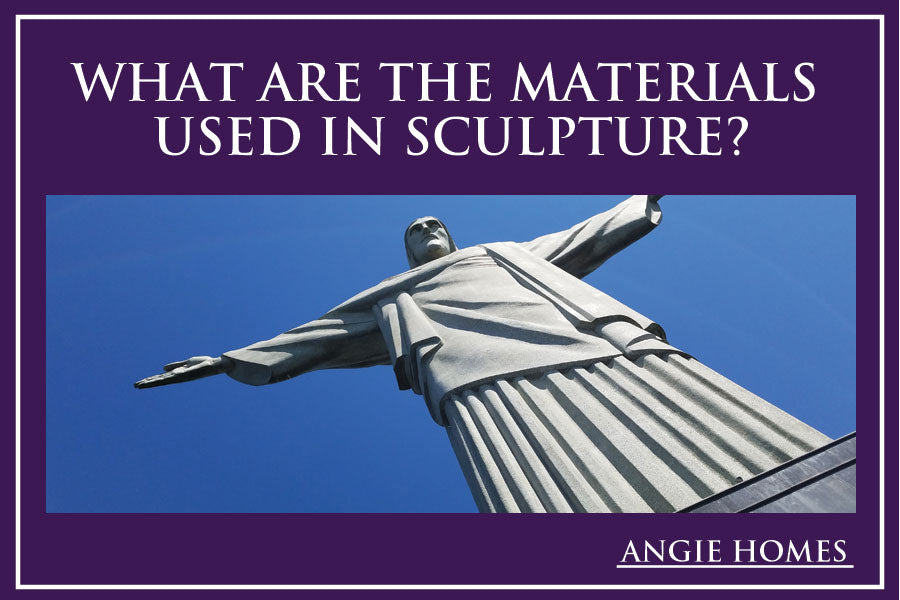
Making types of sculptures is like choosing ingredients for cooking. Artists use different things to create their art. Let's look at what artists use to make sculptures and what makes each material special.
-
Found Objects
Some artists use everyday things they find to make sculptures, and it's called found object sculpture. Artists like Pablo Picasso and Marcel Duchamp made this popular, breaking the usual way sculptures are made.
-
Stone Sculptures
For a very long time, artists have used stones like marble, granite, and limestone to make beautiful and strong types of sculptures. These stones are easy to shape, and artists love them because they can show tiny details.
-
Wood
Artists also like using wood because it feels warm and natural. They carve detailed designs into wood or use its natural lines to make many kinds of sculptures, giving a feeling of being handmade and connected to nature.
-
Clay
Clay types of sculptures are soft and easy to change. Artists can try different things and fix their sculptures before deciding on the final shape. Whether it's small figures or big art pieces, clay sculptures often feel like they were made on the spot.
-
Metal
Metal sculptures are made from things like iron, bronze, or steel. Metal can be moulded so it is very easy and convenient for artists to make detailed designs, and these sculptures last a very long time.
-
Glass:
Glass sculptures are special because they are see-through or kind of transparent. Artists melt glass to make different shapes and play with light and colors to make their sculptures interesting.
-
Plastic
Nowadays, artists use plastic for types of sculptures. Plastic can be shaped or put together from different parts. Artists can try out new ideas and use bright colors and shapes with this material.
-
Mixed media
Mixed media types of sculptures are a mix of different materials like fabric, ceramics, or even electronic parts. Artists create a mix of materials, making the sculpture special and fascinating. Mixing different things adds layers and makes the art more interesting.
Conclusion
In conclusion, the world of types of sculptures is a vast and dynamic realm that spans centuries and encompasses a myriad of styles, forms, and materials. From the classical beauty of Michelangelo's marble masterpieces to the avant-garde creations of contemporary mixed media sculptors, each piece contributes to the rich tapestry of sculptural expression.
Throughout our exploration of types of sculptures, delving into the defining elements and celebrating iconic sculptors, it's evident that sculpture is an ever-evolving art form. The choice of materials, the manipulation of form and space, and the boundless creativity of sculptors continue to push the boundaries of what can be achieved in this three-dimensional medium.
Whether standing before a monumental bronze sculpture or contemplating the meaning behind an abstract installation, the world of types of sculptures invites us to engage with art in a tangible and visceral way. It challenges our perceptions, stimulates our senses, and leaves an enduring imprint on the cultural landscape.
In the hands of skilled sculptors, raw materials are transformed into narratives, emotions, and expressions that transcend the limitations of language. Sculpture, in all its forms, stands as a testament to the human capacity for creativity, innovation, and the eternal quest to give form to the intangible.
Also Read: Unveiling the Dynamics of Kinetic Sculpture
FAQ's
Q. What are the four basic types of sculptures?
Ans: There are four basic types of sculptures: relief sculpture, free-standing sculpture, kinetic sculpture, and environmental sculpture. Relief sculpture is attached to a background, free-standing stands on its own, kinetic involves movement, and environmental interacts with the surrounding space.
Q. What are the 2 classifications of sculpture?
Ans: Sculpture falls into two main categories: additive sculpture, where material is added to create the form, and subtractive sculpture, where material is removed to shape the sculpture. These classifications cover various techniques and approaches in creating sculptures.
Q. What are the 3 main types of sculptures?
Ans: The three main types of sculptures are carving, modeling, and assembling. Carving involves removing material to create a form, modeling builds up material, and assembling combines different materials to construct the sculpture. Each type offers different ways to express artistic ideas.
Q. What are the three main styles of Indian sculpture?
Ans: The three main types of sculptures and styles of Indian sculpture are Classical, Medieval, and Modern. Classical sculpture reflects ancient Indian artistic traditions, Medieval blends Hindu, Buddhist, and Jain influences, and Modern sculpture explores contemporary themes and uses diverse materials.
Q. Who is the father of modern Indian sculpture?
Ans: Ramkinkar Baij is often called the father of modern Indian sculpture. A groundbreaking artist, he played a vital role in shaping modern Indian sculpture with his innovative approach, combining traditional and contemporary elements.
Q. Who is the famous sculptor?
Ans: One of the most famous sculptors is Michelangelo Buonarroti. The Italian Renaissance artist is renowned for masterpieces like "David" and the ceiling of the Sistine Chapel. His contributions to art and sculpture have left a lasting impact on the history of Western art.
